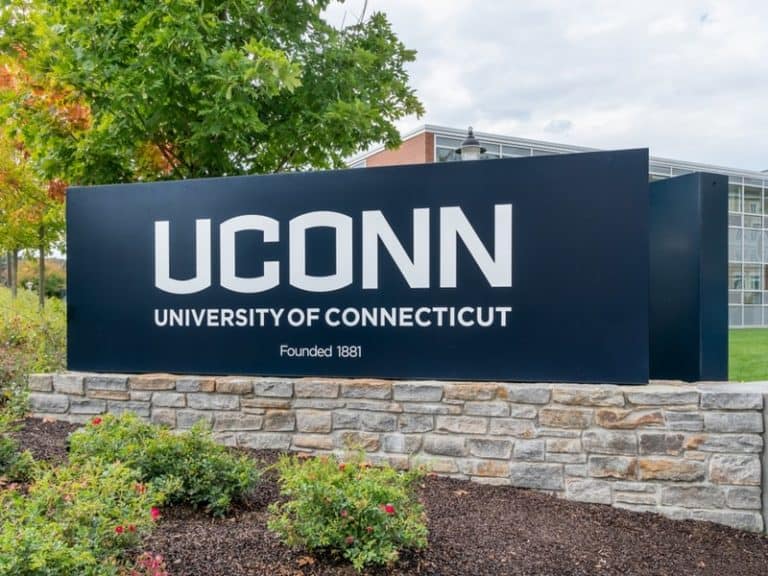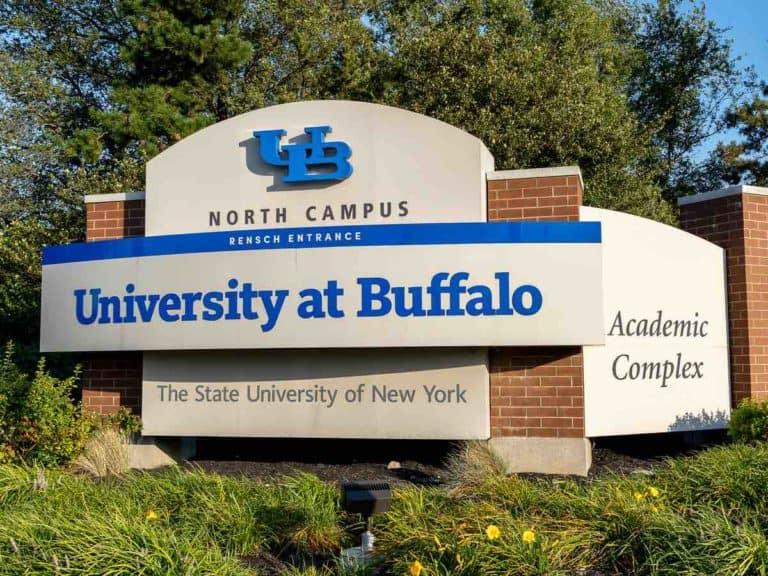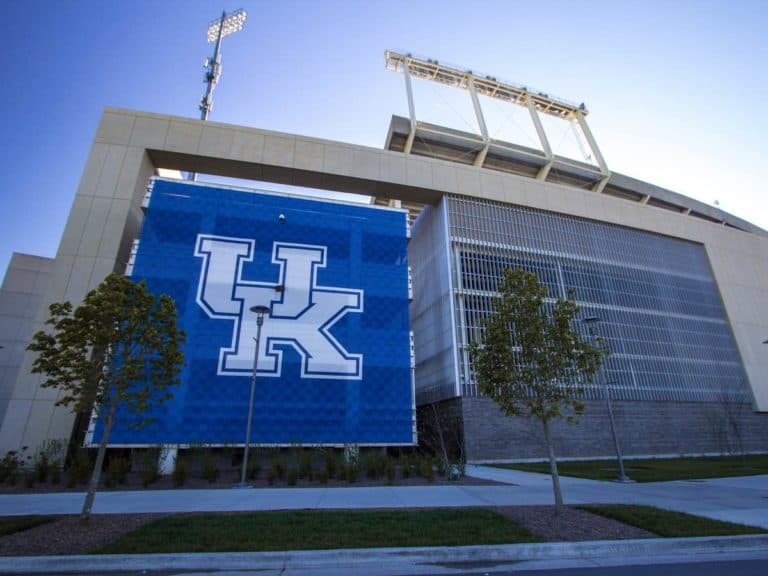UMD or UMBC: Discover Your Dream Maryland University in Minutes!
The University of Maryland, College Park and the University of Maryland, Baltimore County have a couple of things in common.
First, they’re both public research universities in MD.
As a matter of fact, UMD and UMBC have the R1: Doctoral University designation, which means there’s very high research activity taking place within their confines.
Second, they’re both a part of the University System of Maryland.
Formed in 1988, the USM is a system of public higher education in MD — it consists of one system office, three regional centers, and 11 four-year degree-granting institutions.
Besides UMD College Park and UMBC, other schools in the USM include:
- Bowie State University
- Coppin State University
- Salisbury University
- Towson University
- University of Baltimore
- University of Maryland, Baltimore
- University of Maryland Eastern Shore
- University of Maryland Global Campus
- University of Maryland Center for Environmental Science
UMD is the flagship institution of the USM.
It’s also larger than UMBC — UMD’s 1,340-acre campus has 40,792 students (30,353 undergraduates), while UMBC’s 530-acre campus has 13,991 students (10,625).
So, which between UMD vs. UMBC is right for you?
UMD College Park may be for you if you want to go to a massive institution with plenty of degree programs — there are over 300 of them! You may also like going to it if you intend to major in engineering at a party school.
On the other hand, UMBC may be for you if you prefer to go to a smaller and more diverse campus, where more than 60% of the students are minorities.
While it’s not a historically black college or university (HBCU), UMBC is popular for being the leading producer of black undergraduates who go on to complete a PhD.
An Overview of UMD
The University of Maryland, College Park is in College Park, Maryland.
Founded in 1856 and also simply known as Maryland, it’s the largest university in the state of Washington and in the DC Metropolitan Area. And, as mentioned, it’s the flagship school of the USM.
UMD is a Public Ivy League where students can get an Ivy-like education at a tiny fraction of the cost.

Acceptance Rate: Less Than 50% Get In
The University of Maryland acceptance rate is 44% — with the majority of applicants (56,000+ per year), it’s a selective school where your application must stand out for you to get into it.
How do you increase your chances of acceptance to UMD?
Focus on increasing your high school GPA and increasing the rigor level of your secondary school record by taking challenging AP courses as they are the most important criteria in UMD’s admissions process.
These factors can also help make your UMD application attention-grabbing:
- Recommendation letters
- Application essay
- Extracurricular activities
- Talent
- Character
Applying to UMD College Park via early action (EA), whose deadline is November 1, may increase your odds of getting in because the institution itself said it gives you priority consideration for admission.
Check out the podcast interview of UMD student, who chose UMD over Northwestern:
The Average GPA of Incoming Freshmen Students is 4.0
Given that UMD is a selective school, it isn’t surprising that you must have a high GPA to get in.
As a matter of fact, almost 94% of all first-time, first-year students recently admitted to UMD College Park had an impressive high school GPA of 4.0 — less than 1% of them had a GPA of less than 3.5.
Meanwhile, nearly 72% of all admitted freshmen students graduated in the top 10% of their high school class.
Test-optional Policy
UMD is a test-optional school, which means that applicants may or may not submit their test scores.
Successful applicants who reported their respective test scores had composite SAT scores ranging from 1360 to 1520 and composite ACT scores ranging from 30 to 34.
Estimated Cost of Attendance
As of this writing, tuition and fees at the University of Maryland, College Park amount to:
- In-state students: $11,505
- Out-of-state students: $40,306
Here’s a breakdown of other college-related costs of your UMD attendance (estimate only):
- Room and board: $15,416
- Books and supplies: $1,250
- Transportation: $1,514
- Miscellaneous: $1,200
With all expenditures considered, the sticker price (the published cost of attendance without considering financial aid) of attending UMD is $30,885 for MD residents and $59,686 for non-MD residents.
Among freshmen students at UMD, around 74% receive financial aid, each getting an average of $13,412.
UMD meets approximately 65% of an undergraduate’s demonstrated need.
Academics: Over 90% of Undergrads are Happy With It
Undergraduate students at UMD College Park can choose from more than 140 majors.
These are some of the most popular majors at UMD:
- Computer science
- Information science
- Biology
- Economics
- Public health
- Finance
- Psychology
- Criminology
- Engineering
- Political science and government
When must UMD students declare a major?
Undergraduates at UMD must declare a major before they reach 60 academic credits, which means that it’s a requirement for them to do so before they complete their sophomore year of college.
UMD takes pride in having small classes — about 47% of all classes have fewer than 20 students.
The student-to-faculty ratio at UMD is 18:1.
Meanwhile, the retention rate is a whopping 95%, and the graduation rate is 88%.
Online education at UMD
The online campus of UMD is the University of Maryland Global Campus (UMGC), which offers more than 125 online certificates and degrees (associate, bachelor’s, and master’s).
UMD is a Big Party School
First-time, first-year students at UMD don’t need to reside on campus.
However, around 90% of all freshmen students choose to live in residence halls — there are 39 residence halls at UMD, including traditional rooms, semi-suites, suites, and apartments.
UMD students can choose from 650+ student clubs and organizations.
Students who love parties and also those who hate them must note that UMD College Park is a party school — it’s one of the biggest party schools in MD and the entire United States.
As a current student at UMD, I am not in a sorority, but I know many students who are. There are 55 fraternities and sororities at UMD, and more than 20% of all undergraduates are members.
However, you should know that some chapters have gone too far, so UMD restricted Greek life for some time in March 2024.
UMD College Park has 20 varsity teams called the Terrapins.
The Terrapins represent UMD, a founding member of the Atlantic Coast Conference, in various National Collegiate Athletic Association (NCAA) Division I competitions.
Some of the most popular sports at UMD include:
- Basketball
- Soccer
- Lacrosse
- Field hockey
College Rankings
UMD is a highly-ranked public research university.
US News ranks it #46 in National Universities and #19 in Top Public Schools. The popular college ranking site also ranks it #26 in Best Colleges for Veterans and #175 in Best Value Schools.
On the other hand, Niche ranks UMD #30 in Top Public Universities in America and #1 in Maryland.
Niche also ranks it #95 in Top Party Schools in America and #2 in Maryland.
An Overview of UMBC
The University of Maryland, Baltimore County, is in Catonsville, Maryland.
Founded in 1966, UMBC was the first degree-granting institution in the state of MD to be inclusive of all races — currently, around 61% of all its enrollees consist of students from minority and underrepresented groups.
Located in a suburban area, UMBC is mainly a residential school.

Over 80% of Applicants Get In
The UMBC acceptance rate is 81%, making it a less selective academic institution. Every year, UMBC receives approximately more than 11,000 applications, with the vast majority of them getting accepted.
Increasing your chances of acceptance to UMBC
The best way to boost your odds of getting into UMBC is by improving your academic profile by taking challenging AP courses, boosting your GPA, writing compelling application essays, and submitting persuasive recommendations.
UMBC’s admissions officers also take note of the following criteria when reviewing applications:
- Class rank
- Talent
- Extracurricular activities
- Personal qualities
- Work experience
Here’s a tip: applying to UMBC through the EA round (deadline: November 1) may increase your admissions chances, especially to the Honors College, because it gives you priority consideration.
Check out the podcast interview with a student, who preferred UMBC over Vanderbilt:
The Average GPA of Successful Candidates: 3.9
UMBC may have a high acceptance rate.
However, it’s worth pointing out that the average cumulative GPA of its most recent batch of first-time, first-year students is 3.9, which means that many of them were high performers in high school.
True enough, over 60% of admitted students have a 4.0 GPA.
On the other hand, around 54% graduated at the top of their high school class.
Test Policy at UMBC
UMBC has a test-optional policy that allows applicants to decide for themselves whether or not they should report their test scores, but nearly 40% of successful candidates submitted their SAT or ACT scores.
The composite standardized test scores of UMBC’s incoming freshmen students who reported theirs ranged from 1210 to 1400 (SAT) and 23 to 29 (ACT).
Estimated Cost
Currently, tuition and fees at the University of Maryland, Baltimore County amount to:
- In-state students: $12,952
- Out-of-state students: $30,308
The following is a breakdown of other college-related costs of attending UMBC (estimate only):
- Room and board: $14,204
- Books and supplies: $1,600
- Transportation: $1,586
- Miscellaneous: $1,828
Doing the math, the sticker price of attending UMBC for one academic year costs $32,170 for MD residents and $49,526 for non-MD residents, of course, without considering financial aid in the process.
Speaking of which, 88% of all UMBC freshmen receive financial aid, each award amounting to an average of $13,712.
UMBC meets approximately 60% of a student’s demonstrated need.
Declaring a Major is a Must for Applicants
There are over 100 academic majors that undergraduate students at UMBC can choose from.
Of those, some of the most popular include:
- Psychology
- Biology
- Information science
- Computer science
- Engineering
- Economics
- Social work and youth services
- Political science and government
- Communications
According to UMBC, students must indicate a major when applying, although they may choose to change it during the registration process. It’s worth noting that undergraduates may change their majors at any time.
Approximately 40% of all classes at UMBC have fewer than 20 students.
The student-to-faculty ratio is 18:1.
On the other hand, UMBC’s retention rate is 86%, and its graduation rate is 70%.
UMBC Online
UMBC doesn’t have an online campus. Still, it offers a handful of online certificates and degrees.
Unfortunately for undergraduate students, while some online courses are available, there are no online bachelor’s degrees — only master’s degrees.
Campus is Diverse and Has No Party Scene
Residing on-campus is not a requirement for first-time, first-year students at UMBC.
However, many of them begin their undergraduate journey by living in one of the institution’s four residence halls, each having a communal nature as students share bedrooms and semi-private bathrooms.
There are 260+ clubs and organizations around, from accounting club to retriever robotics.
UMBC is not a party school.
As such, social gatherings are usually small and intimate, and mostly activities-based among friends and organization mates with shared interests.
Over 40 fraternity and sorority chapters are around, though less than 10% of all undergraduates are members.
So, in other words, Greek life isn’t big at UMBC.
UMBC’s 20 varsity teams, called the Retrievers, compete primarily in the America East Conference, although they are also members of and participate in the NCAA Division I.
Here are some of the most popular sports at UMBC:
- Basketball
- Swimming and diving
- Soccer
- Volleyball
College Rankings
The University of Maryland, Baltimore County #133 in National Universities and #70 in Top Public Schools by US News.
It also ranks it #87 in Best Colleges for Veterans and #69 in Best Value Schools.
Meanwhile, Niche ranks UMBC #74 in Top Public Universities in America, #2 in Top Public Universities in Maryland, #101 in Most Diverse Colleges in America, and #3 in Best Test Optional Colleges in Maryland.
Disclaimer: The views and opinions expressed in this article are those of the authors and do not necessarily represent those of the College Reality Check.





